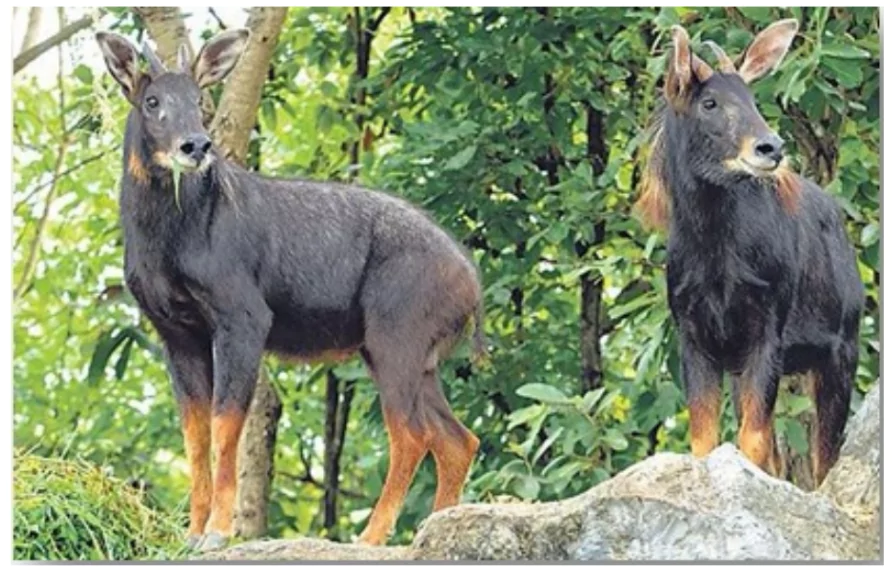Recently, The mainland serow has been recorded at the lowest elevation beyond Bhutan which is its natural home.
- Mainland serow is a mammal that appears somewhere between a goat and an antelope.
- It is found 96 metres above the mean sea level in western Assam’s Raimona National Park.
Serows
- There are many species of the Serow and all of them are found in Asia.
- Japanese serow
- Red serow (found in eastern India, Bangladesh, and Myanmar)
- Taiwan or Formosan serow.
- The Himalayan serow, or Capricornis sumatraensis thar
- It is restricted to the Himalayan region.
- It is a subspecies of the mainland serow (Capricornis sumatraensis).
Enroll now for UPSC Online Classes
The Himalayan serow

- Himalayan serow resembles a cross between a goat, a donkey, a cow, and a pig.
- Recognition: Official state animal of Mizoram.
- Inhabited areas: According to the International Union for Conservation of Nature, the mainland serow inhabits areas at altitudes of 200-3,000 metres.
- The animal habitat is across the India-Bhutan border in Phibsoo Wildlife Sanctuary and the Royal Manas National Park in the Himalayan country.
- They are known to be found in eastern, central, and western Himalayas, but not in the Trans Himalayan region.
- Trans Himalayan region located to the north of the Great Himalayas which consists of Karakoram, Ladakh, Zaskar and Kailash mountain ranges.
- Conservation Status:
-
- IUCN Red List: Vulnerable
- CITES: Appendix I
- The Wildlife Protection Act, 1972: Schedule I
Raimona National Park
- It was officially declared a national park in June 2021, becoming the sixth national park in the state of Assam.
- It is a newly established protected area located in the Bodoland Territorial Region (BTR) of Assam.
- Boundary: Area of the park includes the northern part of the notified Ripu Reserve Forest, which forms the western-most buffer to the Manas National Park
- West: Sonkosh river
- East: Saralbhanga river
- South: Pekua river defines Raimona’s southern boundary
- Area is interspersed by the Sankosh River which flows through the park.
- Flora: The park boasts a rich biodiversity with various types of vegetation, including semi-evergreen forests, mixed deciduous forests, and patches of grassland.
- Fauna: Golden langurs, Asian elephants, tigers, clouded leopards, Hornbills, great pied hornbills, and various migratory birds.
|
Challenges in Conservation
- Fragmented Distribution: The animal is distributed from the Himalayan belt to southern China and Sumatra but its populations are fragmented, isolated, and rapidly declining due to poaching and habitat loss.
- Lack of Data: The lack of reliable data on the species makes it difficult to come up with conservation actions to ensure long-term survival
Check Out UPSC NCERT Textbooks From PW Store
![]() 28 Jun 2024
28 Jun 2024
